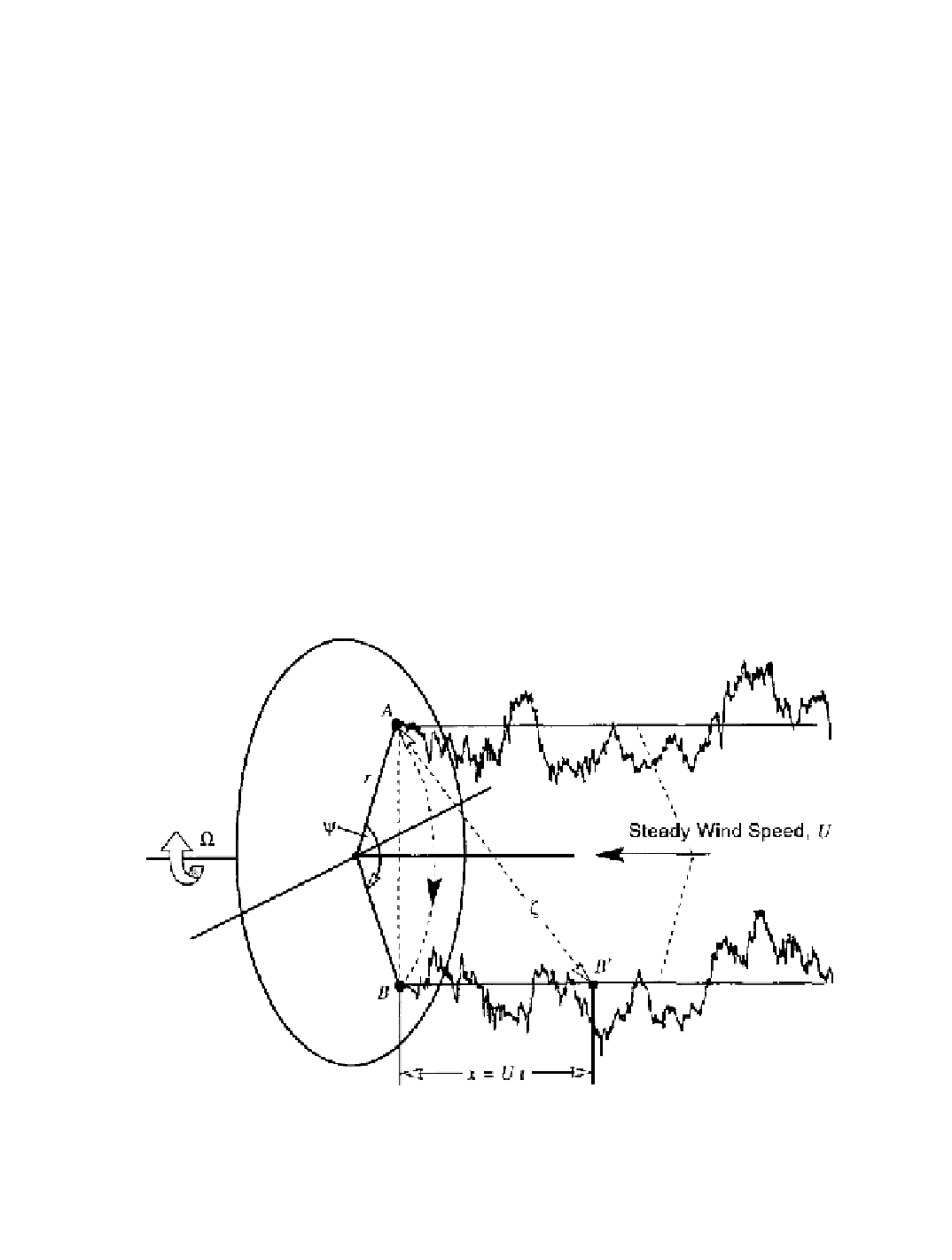Environmental Engineering Reference
In-Depth Information
Lagrangian Mathematical Models of Turbulence
Several mathematical models of turbulence spectra seen by a section of a rotating
turbine blade have been developed [Rosenbrock 1955, Holley
et al.
1981, Connell 1981,
Kristensen and Frandsen 1982, Powell and Connell 1986a]. These models are similar in
approach to that of Houbolt and Sen [1972] for describing two-point spatial spectra. The
basic spectral theory consists of the Fourier transform of a two-point spatial correlation
function for turbulence as experienced at a rotating point. The point rotates either in a
vertical plane, as on a HAWT blade, or in a horizontal plane, as on a VAWT blade.
Empirical equations developed by Spera [1995] model rotationally-sampled turbulence
for input into structural-dynamic computer codes for calculating fatigue loads.
HAWT Rotationally-Sampled Turbulence Model
Consider the plane of revolution for a HAWT blade as shown in Figure 8-30. The
distance z represents the separation distance between the two fluctuating velocities in the
turbulent flow field which will correlate at the plane of revolution on the circular path of
a section on the moving blade. That is, at time zero the blade section is at point
A
and
t
seconds later it is at
B.
However, since the turbulence is assumed to drift without change
at the steady wind speed,
U
,
the turbulent fluctuation seen by the blade section at
B
was
upwind a distance
x = Ut
at time zero, at point
B'.
The two-point correlation we seek,
between the longitudinal wind speeds at points
A
and
B'
that are separated by a distance z,
is given by Equations (8-31), which are derived in detail in [Frost
et al.
1987]. These
follow the approach in Rosenbrock [1955], Connell [1981], and Kristensen and Frandsen
[1982] and assume the turbine shaft is aligned with the wind and turbulence is isotropic.
Figure 8-30. Rotating (Lagrangian) coordinate system for calculating two-point cor-
relation coefficients for a HAWT.

Search WWH ::

Custom Search